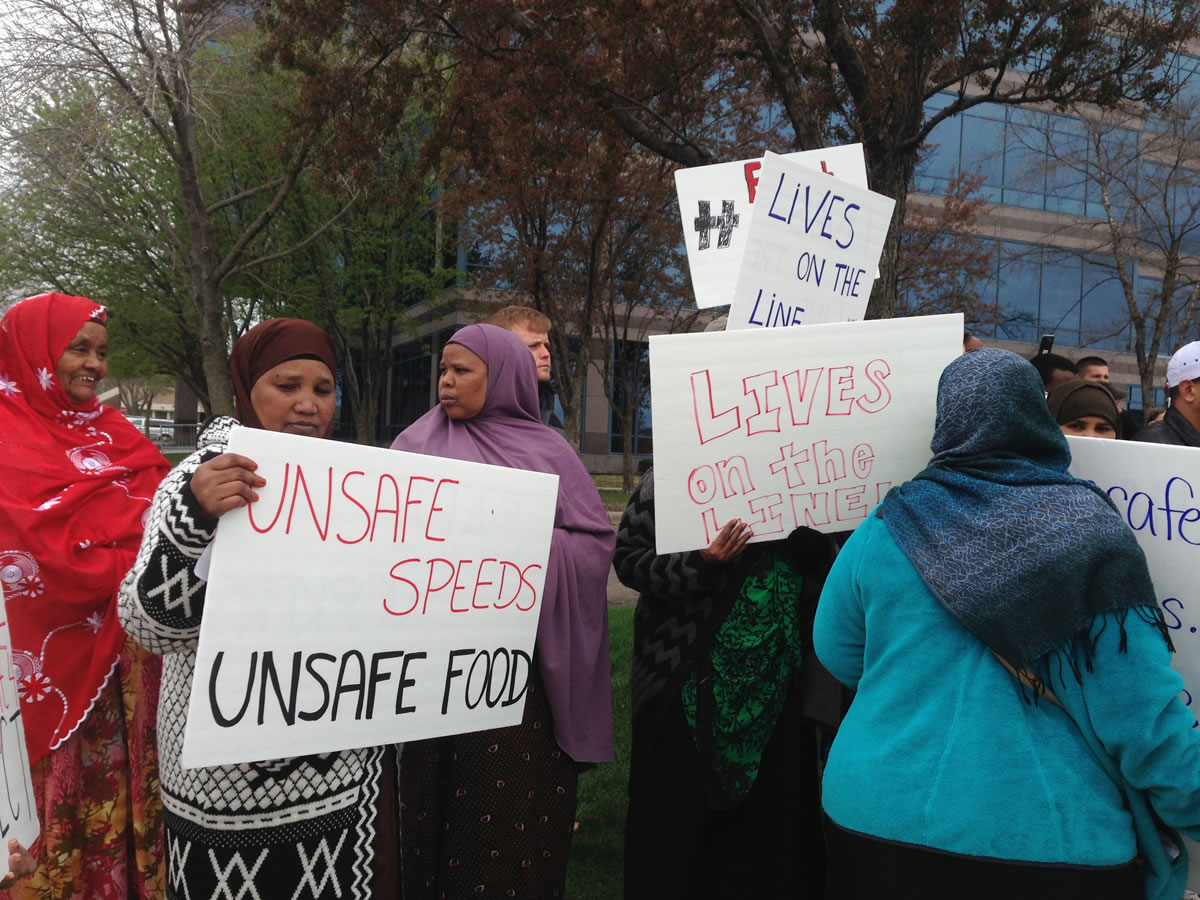

Share
“When I was no longer able to use my right hand, do you know what they told me? ‘You are no longer useful – you are fired.’”
Omar Hassan displayed his right hand, where one finger is permanently bent. He suffered nerve damage to his hand and right side from backbreaking work on the poultry processing line at the Jennie-O plant in central Minnesota.
When he sought medical attention from his own doctor – and a lighter-duty assignment – the company balked. Unable to work using mostly his left hand, he was fired.
Hassan’s story was highlighted in St. Cloud on Thursday, Workers Memorial Day, an annual commemoration by the AFL-CIO and affiliated unions of workers killed and injured on the job and the struggle for workplace safety.
The St. Cloud-based Greater Minnesota Worker Center marked the day by releasing a report on conditions in the poultry processing industry and demonstrating outside an office of Gold’N Plump, another major poultry processor. Workers tried to deliver a letter requesting a meeting with management about safety and other issues, but were rebuffed.
The Worker Center conducted in-depth interviews with about 50 poultry industry workers for the report, titled “Striving for a Just and Safer Workplace.”
“We learned from this research that workers reportedly are constantly faced with growing pressure and intimidation from line leads and supervisors to work like robots at crippling line speeds, which in turn sacrifices production employees’ safe work behaviors and their ability to have a real voice on the job,” the report states.
Eighty-one percent of the respondents said they were concerned about their safety at work, the survey found. Forty percent said they had been injured on the job.
“Occupational injuries including carpal tunnel and musculoskeletal injuries are some of the most important issues workers mentioned as the major cause of disabling pain and illness,” the report found.
“Some of the workers have shown us visible injuries on their hands, eyes, and skin.
Others have described to us the agonizing pain they feel on parts of their body including spine, neck, head, wrists, shoulders and legs.”
Many said they were afraid to report the injuries for fear of being fired or other retaliation, the report stated.
Other concerns cited by the workers, many of whom are African immigrants, included unfair treatment, religious discrimination and lack of access to bathroom breaks.
“While access to bathroom breaks is a right protected under OSHA regulations, 86 percent of workers interviewed told the survey collectors that they get less than two bathroom breaks in a week,” the report said.
“I have been asked to sign a warning letter nine times in two years just for asking to use the bathroom,” Mohamed Mohamed told the worker center surveyors. “I felt oppressed.”
Solutions offered in the report include better enforcement of workplace laws and more organizing by workers and unions.
View a video stream from the event on the Minnesota AFL-CIO Facebook page.

